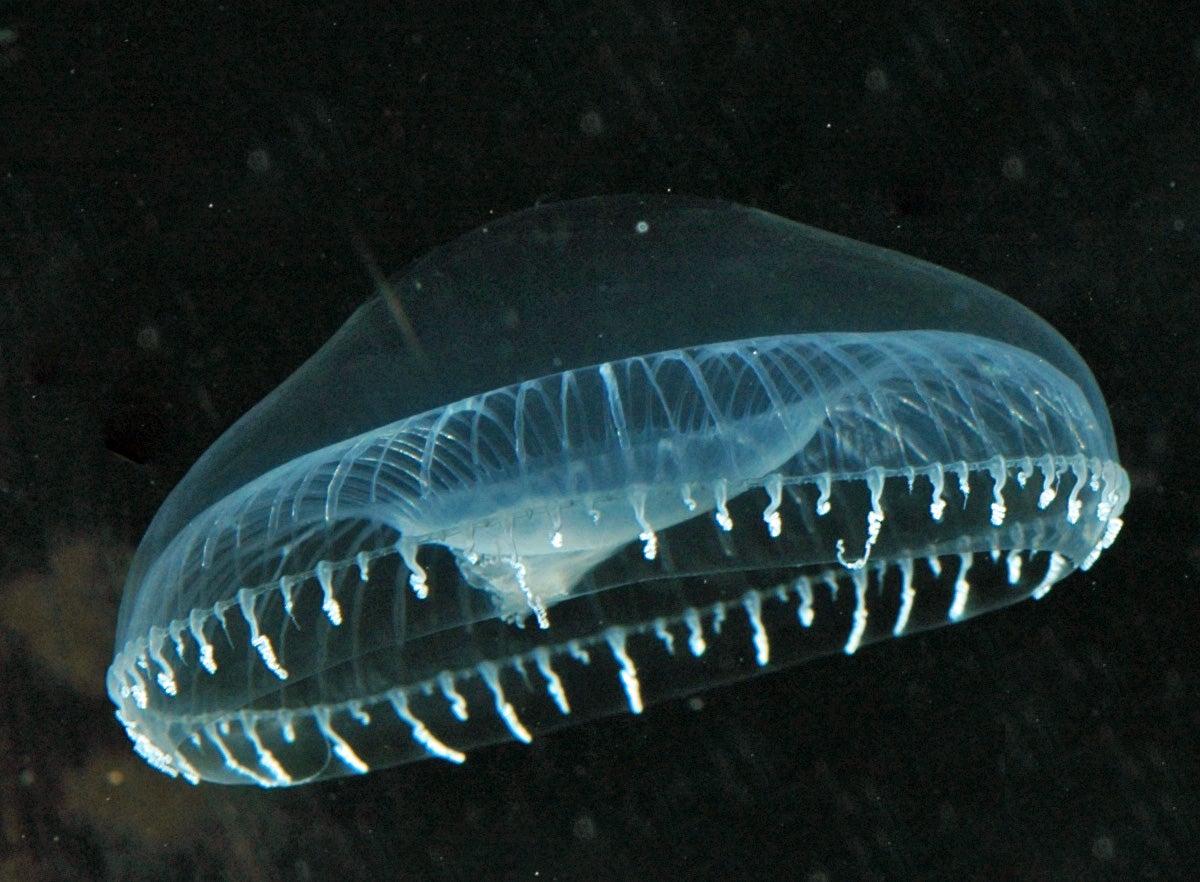
A rare type of crystal jellyfish has been identified off the coast of Cornwall.
Commonly known as the crystal jelly, experts have detected a notable increase in the number of Aequorea Victoria in Cornish waters.
The species is typically found off the west coast of North America, identified from the Bering Sea to southern California. It’s particularly common in Puget Sound, an inlet of the Pacific Ocean along the northwestern coast of Washington.
The species is particularly common in Puget Sound— (Sierra Blakely/Wikimedia Commons)
Spotted at Cadgwith on west Conrwall’s Lizard Peninsula, there were also sightings around Alderney and Guernsey in August which experts labelled indicative of “warmer seas.”
Though not strong enough to harm humans, the species does have stinging cells, feeding off plankton including marine plants and animal plankton.
"For some reason, this year, we’ve had a massive influx all along the south coast”, Matt Slater of Cornwall Wildlife Trust told BBC Radio Cornwall.
"I was actually diving last week off the Lizard and there was a huge number of them and they were accumulating in the bays and forming almost a ceiling above us as we were diving underwater."
"There’s either not many or there’s loads. This is because of their life cycle”, Mr Slater added. "They reproduce very rapidly and produce thousands of tiny larvae.”
Now, the team at Plymouth’s Marine Biological Association, which is working on the Darwin Tree of Life Project, haS acquired samples for DNA testing to determine exactly which species is being recorded.
Though it’s been ascertained that the jellyfish belongs to the family Aequorea, the association noted that DNA analysis is the only way to accurately decipher the species.
In February 2022, alarm bells were raised when the poisonous Portuguese Man O’War washed up on a beach in Devon.
The species was sighted on Slapton Sands and Lannacombe Beach. Typically, the jellyfish are blown into the sea via westerly winds, commonly found on the west coast and the shores of the Isle of Scilly and Cornwall.
The Portuguese Man O’War is not typically seen across UK shores in the winter, typically arriving from warmer climates in the Atlantic. Their tentacles can grow up to 50cm in length.







